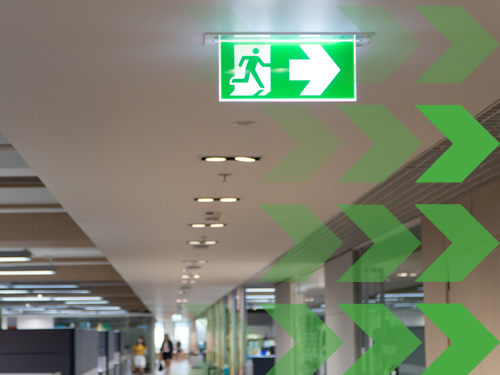The Importance of Emergency Lighting
Emergency lighting is more than just a convenience; it’s a critical safety feature for homes and offices. Whether it’s a power outage, natural disaster, or unexpected emergency, having reliable lighting ensures safety and prevents accidents. The right emergency light can provide illumination for navigation, assist in completing tasks during dusk or nighttime, and give you peace of mind in uncertain situations.
Understanding Different Types of Emergency Lights
When choosing an emergency light, it’s essential to understand the variety of options available on the market. From LED lights to rechargeable lanterns to ceiling-mounted exit signs, each type of emergency light serves a unique purpose. Portable handheld lights are perfect for movement, battery-powered lanterns provide all-around visibility, while wall-mounted designs are ideal for consistent illumination in fixed locations. Recognizing how these options meet specific needs can help ensure you pick the right one for your situation.
Factors to Consider When Choosing an Emergency Light
Durability, brightness level, and ease of use are some of the primary factors to consider when selecting an emergency light. Think about the environment where it will be used. Will it be indoors, outdoors, or both? For instance, a light intended for outdoors should be water-resistant and rugged. Brightness, measured in lumens, determines the light’s visibility range, so choose one that provides ample illumination. Additionally, opt for a user-friendly emergency light that requires minimal setup and maintenance.
Emergency Light Technologies and Features
Advancements in technology have elevated the capabilities of emergency lights considerably. Modern LED-based options are energy-efficient, brighter, and more durable than traditional halogen bulbs. Many models offer extra features like motion sensors, adjustable brightness settings, and solar charging capabilities. Some emergency lights also include USB ports, enabling them to double as power banks for charging devices during emergencies—which is an increasingly valuable feature in today’s tech-driven world.
Battery Life and Power Source Options
The power source plays a significant role in the performance of your emergency light, particularly during extended power outages. Common options include lithium-ion batteries, replaceable alkaline or nickel-cadmium batteries, and even self-charging solar panels. Models with long-lasting battery life or those that come with power-saving modes are ideal for prolonged use. Additionally, some lights are corded or offer dual functionality, allowing them to run on batteries or be plugged into wall outlets.
| Feature | Battery Type | Advantages | Disadvantages |
|—————————-|———————-|————————————-|———————————|
| Rechargeable Batteries | Lithium-Ion | Eco-friendly, reusable, longer life | Higher upfront cost |
| Replaceable Batteries | Alkaline/NiCad | Easily replaceable, convenient | Not eco-friendly, recurring cost |
| Solar-powered Lights | Solar Panels | Sustainable, free energy source | Limited performance on cloudy days |
Placement and Installation Tips
Proper placement and installation of emergency lights ensure maximum efficiency when the lights are most needed. Install fixed emergency lights in areas where visibility is crucial, such as hallways, staircases, or exit points. For office spaces, ensure compliance with safety norms by installing lights above doorways or fire exits. Regular testing and servicing should also be part of your maintenance routine to ensure the fixtures are functional when required. If you’re using portable backup lights, make sure they are readily accessible and fully charged at all times.
Cost vs. Value Budgeting for Emergency Lights
Choosing an emergency light on a budget doesn’t necessarily mean sacrificing quality. When comparing options, look for the best value instead of the lowest price tag. This involves balancing upfront costs with long-term benefits like durability, energy efficiency, and advanced features. Spending a little extra on a high-quality model might save you from incurring repeated repair or replacement costs. Research and reviews can also help ensure you make an informed decision.
Regulations and Standards Compliance
It’s vital to ensure that the emergency lighting you select meets industry standards and government safety regulations. Certified lights usually feature markings like CE, UL, or EN standards, signifying their compliance with relevant safety protocols. For businesses and offices, adhering to these standards isn’t just a suggestion; it’s a requirement to fulfill building codes and workplace safety regulations. Check with local codes to ensure you’re investing in the right equipment.
Integrating Emergency Lights with Smart Home Systems
For tech-savvy users, integrating emergency lights with smart home systems can enhance safety and convenience. Smart-enabled emergency lights can sync with systems like Alexa, Google Home, or Apple HomeKit, allowing you to control lighting through voice commands or mobile apps. They can also be programmed for automated responses, such as lighting up specific areas during night-time loss of power or alerting you when batteries need recharging. This level of integration not only boosts functionality but also complements modern lifestyles.
Ensuring Safety and Preparedness
Selecting the right emergency light is about more than brightness or style; it’s about ensuring safety and preparedness during life’s unexpected events. By evaluating factors such as type, technology, power options, and compliance standards, you can make an informed decision that fits your environment and needs. Pairing functionality with modern features like smart integration and renewable energy options ensures you’re making a future-conscious investment.
When reliability matters most, taking proactive steps to incorporate effective emergency lights guarantees not only peace of mind but also safety for both your home and workplace.

